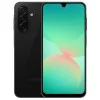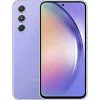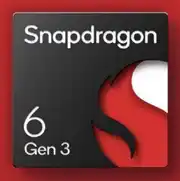Samsung Exynos 1380

Samsung Exynos 1380: A Balance of Power and Efficiency in the Mid-Range
April 2025
Introduction
Mobile processors are at the heart of modern smartphones, determining their performance, energy efficiency, and capabilities. In 2025, Samsung continues to strengthen its market position with the Exynos 1380 chip, which occupies a niche in mid-range devices. This SoC (system on chip) combines a 5nm manufacturing process, 5G support, and enhanced AI capabilities. Let's explore what makes this processor noteworthy and who it is suitable for.
1. Architecture and Manufacturing Process: The Foundation of Performance
The Exynos 1380 is built on Samsung's 5nm manufacturing process (EUV), which ensures a high transistor density and reduced power consumption. Its architecture includes:
- 8-core CPU: A hybrid layout of 4 performance cores Cortex-A78 (up to 2.4 GHz) and 4 energy-efficient Cortex-A55 (up to 1.8 GHz). This allows for a balance between power and battery life.
- Mali-G68 MP5 GPU: A 5-core graphics unit supporting Vulkan 1.3 and OpenGL ES 3.2 APIs. The GPU clock speed reaches up to 950 MHz, providing smooth performance in games and applications.
- NPU (Neural Processing Unit): A dual-core AI accelerator for tasks such as scene recognition in cameras or charging optimization.
TDP 5 Watts indicates a focus on energy efficiency—the processor heats up less and lasts longer on battery.
2. Real-World Performance: From Gaming to AI
Gaming: The Mali-G68 MP5 handles most games at medium settings. For example:
- Genshin Impact — stable 40–45 FPS at Full HD resolution.
- Call of Duty: Mobile — 60 FPS at high settings.
However, in heavy scenes, drops to 30 FPS may occur, and prolonged sessions can lead to moderate heating (up to 42–45°C).
Multimedia:
- Supports displays with a refresh rate of up to 120 Hz and resolutions up to QHD+.
- Hardware decoding for 4K@60fps video (H.265, AV1).
- An audio chip with Dolby Atmos technology for immersive sound.
AI Applications:
- Accelerated algorithms in Google Photos, Adobe Lightroom Mobile.
- Night mode processing is 20% faster compared to the Exynos 1280.
Power Consumption:
With active use (gaming, streaming), a smartphone with the Exynos 1380 and a 5000 mAh battery lasts around 6–7 hours. In standby mode, the consumption is minimal thanks to optimizations for the smaller cores.
3. Built-in Modules: The Connectivity of the Future
- 5G Modem: Support for Sub-6 GHz (up to 3.7 Gbps) and mmWave (only in Pro version).
- Wi-Fi 6E: Speeds up to 2.4 Gbps, compatible with new routers.
- Bluetooth 5.3: Improved connection stability with TWS earbuds and smartwatches.
- Navigation: GPS, GLONASS, Galileo, BeiDou — positioning accuracy of up to 1 meter.
The lack of satellite communication for emergency messages (like in the iPhone 15) is a downside for travelers.
4. Comparison with Competitors: Who Leads?
Exynos 1380 vs Snapdragon 7 Gen 2:
- In CPU performance, Snapdragon leads in multi-threading (Geekbench Multi-Core: ~3000), but Exynos excels in energy efficiency.
- The Adreno 662 GPU in Snapdragon is about 15% more powerful than the Mali-G68 in 3DMark tests.
- Smartphones with Snapdragon 7 Gen 2 are priced higher ($550–700 compared to $400–600 for Exynos).
Exynos 1380 vs MediaTek Dimensity 8300:
- The Dimensity 8300 surpasses in gaming due to its Mali-G710 GPU, but falls short in battery life (TDP 6.5 Watts).
Generational Improvements: Compared to the Exynos 1280, the new chip is 25% faster in AI tasks and 18% more energy-efficient.
5. Use Cases: Who Is It Suitable For?
- Gaming: Ideal for casual games (PUBG Mobile, Brawl Stars). For AAA titles, a device with active cooling is recommended.
- Everyday Tasks: Social media, office applications, multitasking — no lags.
- Photography and Videography:
- Supports cameras up to 200 MP (with interpolation).
- Records 4K@30fps with EIS (electronic image stabilization).
- Portrait mode with precise object-background separation.
6. Pros and Cons
Pros:
- Excellent battery life thanks to the 5nm process and optimizations.
- Support for modern connectivity standards (Wi-Fi 6E, 5G).
- Affordable device prices ($400–600).
Cons:
- GPU is weaker compared to Snapdragon 7 Gen 2.
- No hardware support for 8K video.
- Heating during extended gaming sessions.
7. Practical Tips: How to Choose a Smartphone with Exynos 1380?
- Cooling: Look for models with vapor chamber cooling or graphite plates (e.g., Samsung Galaxy A75).
- RAM: At least 8 GB for comfortable usage in 2025.
- Display: An AMOLED display with a refresh rate of 90–120 Hz will unlock the processor's potential.
- Battery: A 5000 mAh capacity is optimal.
Typical Devices:
- Samsung Galaxy A75 ($499): 6.7" AMOLED, 108 MP camera.
- Xiaomi Poco F5 Lite ($429): 120 Hz screen, 67 W charging.
8. Final Conclusion
The Exynos 1380 is a solid choice for those seeking a smartphone with good battery life, 5G support, and smooth performance in everyday tasks. It is suitable for:
- Students — for study and entertainment.
- Travelers — thanks to precise GPS and energy efficiency.
- Non-gamers — if you don't plan to play demanding games for hours.
The main benefits include a balance of price and performance, readiness for the future with Wi-Fi 6E and 5G, and Samsung's proprietary One UI optimization. If your budget is limited to $500, the Exynos 1380 is one of the best options in 2025.
Basic
4x 2 GHz – Cortex-A55
GPU Specifications
Connectivity
Memory Specifications
Miscellaneous
Benchmarks
Phones with Exynos 1380






Tablets with Exynos 1380


Comparison of Devices with Exynos 1380
Compared to Other SoC
Related SoC Comparisons
Share in social media
Or Link To Us
<a href="https://cputronic.com/en/soc/samsung-exynos-1380" target="_blank">Samsung Exynos 1380</a>




